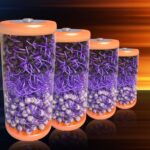 Cornell University researchers have turned to nature to tackle one of our toughest challenges: capturing carbon dioxide in a way that’s both economical and eco‑friendly. By borrowing a trick from plants, the team’s innovative technique uses sunlight to convert a stable molecule into a reactive form capable of locking away carbon emissions.
Cornell University researchers have turned to nature to tackle one of our toughest challenges: capturing carbon dioxide in a way that’s both economical and eco‑friendly. By borrowing a trick from plants, the team’s innovative technique uses sunlight to convert a stable molecule into a reactive form capable of locking away carbon emissions.
If you’ve ever wrestled with the limitations of traditional carbon capture methods—often energy‑intensive and costly—you’ll appreciate this fresh approach. Instead of relying on fossil fuels, the process mimics photosynthesis, tapping into sunlight to power the transformation that not only captures CO2 but also releases it when needed, all by tweaking the pH level.
Graduate student Bayu Ahmad led the project, while associate professor Phillip Milner highlighted how this method sidesteps the pitfalls of conventional amine‑based systems. These older techniques can be unstable in oxygen‑rich environments and demand extra energy, a hurdle the new method elegantly overcomes.
Inspired by the enzyme RuBisCo that drives carbon fixation in plants, the process adjusts conditions to release the stored carbon without a heavy energy penalty. Using a simple sorbent called 2‑methylbenzophenone, the system matches or even outperforms other light‑driven methods—proving that simplicity can be remarkably effective.
The technology isn’t just a lab experiment either. It’s already been trialled on real flue gas from Cornell’s Combined Heat and Power Plant, paving the way for solar panel‑like units that could one day capture atmospheric CO2 and convert it into a storable form.
In addition to its carbon capture potential, the team is exploring ways to separate other gases using this light‑driven approach, a move that could lead to significant energy savings across gas processing industries. Collaborations with Cornell’s SC Johnson College of Business are already in motion, aiming to bridge the gap between breakthrough laboratory work and practical, commercial applications.
This work offers a promising alternative to traditional, energy‑intensive carbon capture methods, inviting us to envision a cleaner path forward powered simply by sunlight.








